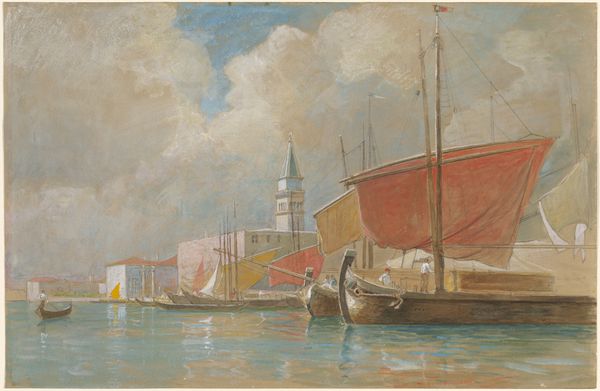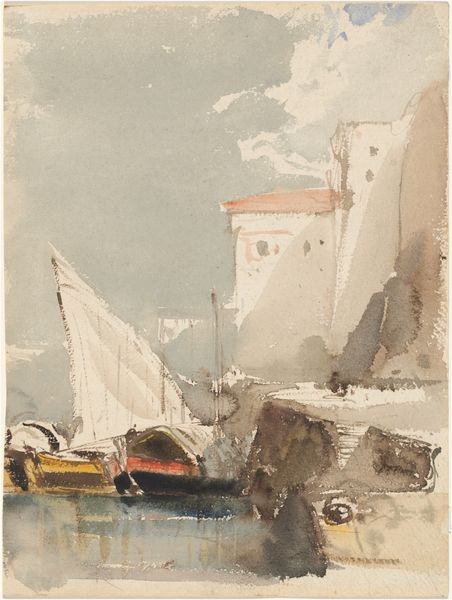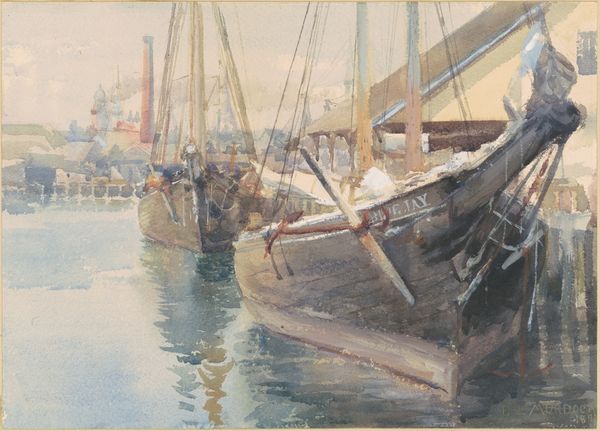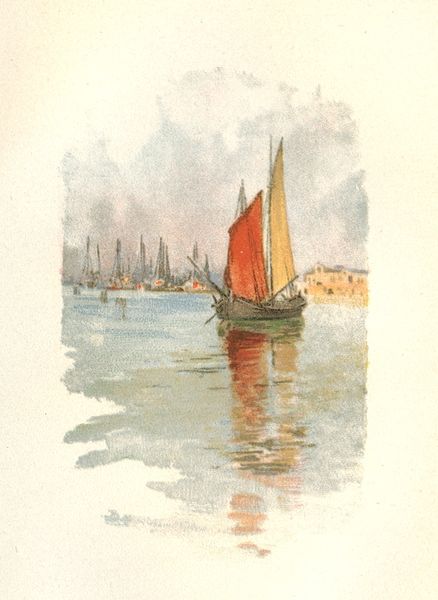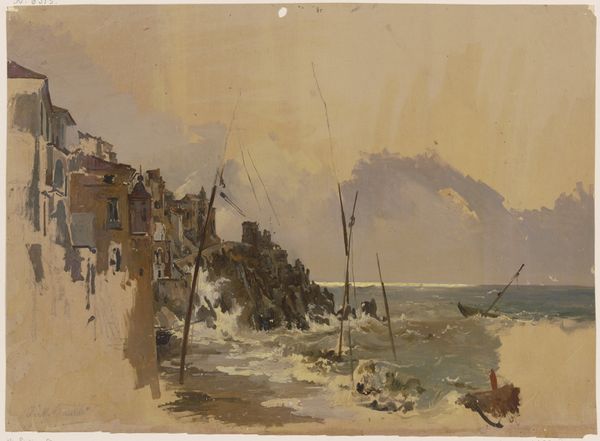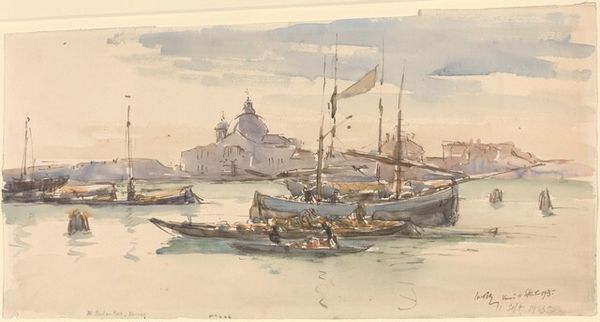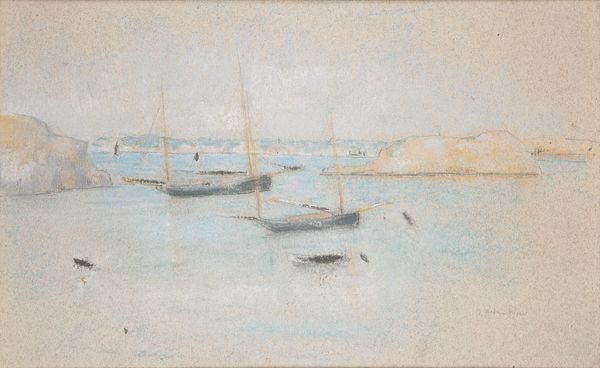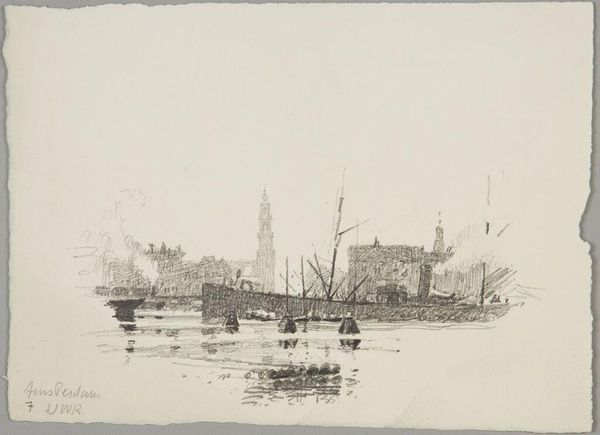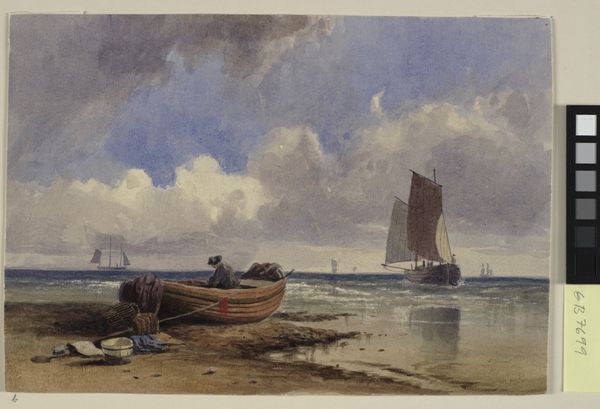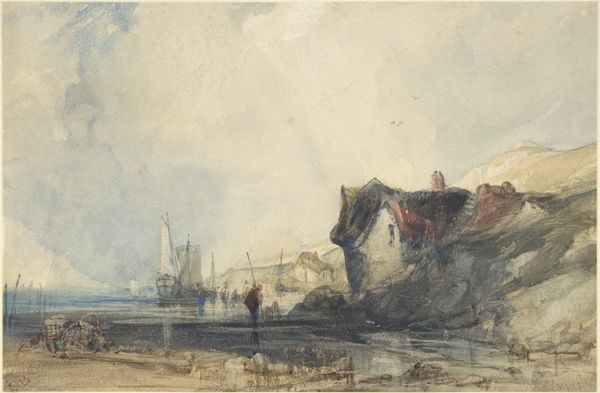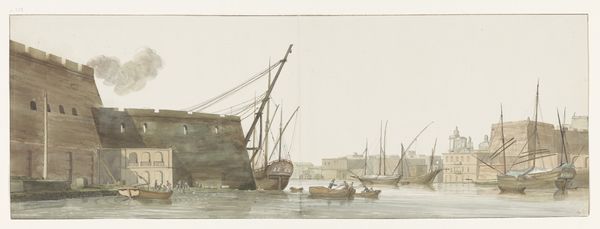
Dimensions: height 218 mm, width 155 mm
Copyright: Rijks Museum: Open Domain
Editor: So, here we have "View in Venice with the Giudecca Canal" by Hercules Brabazon Brabazon, created sometime between 1831 and 1906, using watercolors and possibly some coloured pencil. I'm really drawn to the way he captured the light here; it feels so hazy and dreamlike. What catches your eye? Curator: It’s funny you say ‘dreamlike’, because I often think of Venice itself as a dream – a place perpetually suspended between water and sky. What I adore about Brabazon’s approach is how he distills that ephemeral quality. He hasn't simply painted Venice; he has painted a feeling, a fleeting impression of it. Editor: So it’s less about accurate representation and more about… a vibe? Curator: Precisely! Think of those hazy edges, the way the buildings seem to dissolve into the atmosphere. This is impressionism at its most intuitive. He captures the sensation of being there, the salty air, the humid atmosphere, the gentle lapping of water against the fondamenta. Do you get a sense of how quickly he might have worked? Editor: Now that you mention it, there is a spontaneity, right? Like he’s trying to capture a moment before it disappears. Almost as though it's not supposed to be photorealistic but a feeling, an emotive expression! Curator: Yes! You feel his personal experience, don’t you? The sheer joy of simply being present in that very special place. We often get too bogged down in the details of art history, but works like this remind us of art's simplest and purest function: to connect us to another human's perception of the world. Editor: Wow, I see it in a completely different way now. I guess it really shows you don't need precision when the objective is emotion. Curator: Indeed! A perfect example of how imperfection can be the most revealing perfection of all.
Comments
No comments
Be the first to comment and join the conversation on the ultimate creative platform.
